NCERT Solutions for Class 4 Maths - Chapter 9 - Halves And Quarters
Page No 95:
Half-Half
Ques 1: If the cats ask you to divide the chapati equally, how will you divide it?
Ans:
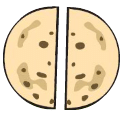
Half of Half
Ques 2: If two more cats come for food, how will you divide one chapati equally for four cats?
Ans:
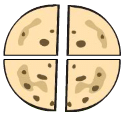
Half of Many Pieces
Ques 3: Rani got a chocolate. She divided it equally and gave half to her friend Reena.
- Circle the portion that Reena got.
- How many pieces of chocolate are there? _______
- How many pieces were left with Rani? _______

Ans:
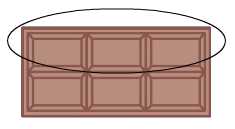
- There are 6 pieces of chocolate.
- Rani gave half of her chocolate to her friend Reena. Rani was left with the remaining half, that is, 3 pieces.
Page No 96:
Ques 1: Draw different shapes using these triangles. One such shape is shown here.
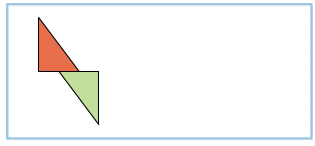
Ans:
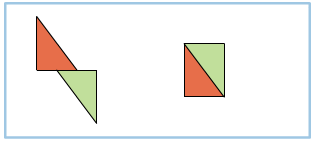
Page No 97:
Ques 1: In how many different ways can you cut a rectangle into half?
Draw 5 different ways.

Can you check if they are equal?
Ans:
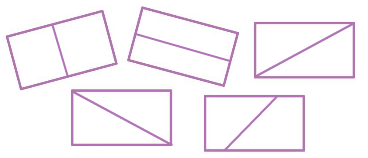
Yes, they are equal.
Ques 2: In how many different ways can you cut a rectangle into four equal parts?
Draw 5 different ways.
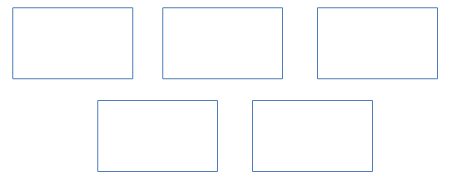
Can you check if they are equal?
Ans:
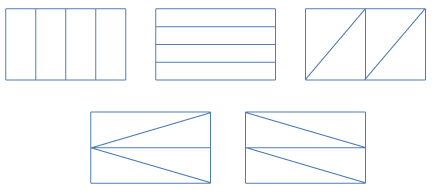
Yes, they are equal.
Page No 98:
Cutting the Cake
Rajni’s father brought a cake. She divided the cake into 4 equal parts — for herself, her brother Raju, her father and her mother.
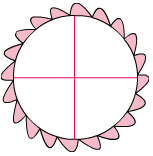
Ques 1: Colour each share with different colors.
Ans:

Ques 2: How much does each get? ________
Ans: Each of them gets 1/4 of the cake.
Ques 3: Father gave her share of cake to Rajni. Now colour the total part that Rajni will get.

Ans:
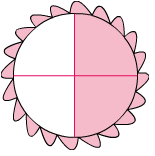
Ques 4: Out of 4 parts Rajni will get _________ parts, which is equal to half of the cake. So she can write it as 2/4 or 1/2.
Ans: Out of 4 parts Rajni will get 2 parts, which is equal to half of the cake. So she can write it as 2/4 or 1/2.
Ques 5: Colour the share Raju got.
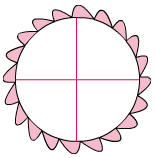
Ans:
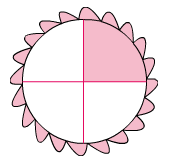
Ques 6: How much of the cake do Rajni and Raju together get? Colour their total share. Altogether they get 3 parts out of 4, so we can write it as 3/4.
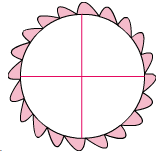
Ans: Rajni and Raju together get 3/4 of the total cake.
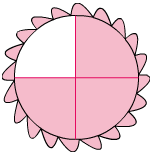
Page No 99:
Ques 1: One day he wants to eat pumpkin halwa (sweet dish). He tries to buy a big pumpkin with only Rs 10. He asks the first pumpkin seller the price of a big pumpkin. First pumpkin-seller— 1/4 of this pumpkin is for Rs 10. This full pumpkin will cost Rs __________.
Ans: Cost of 1/4 of the pumpkin = Rs 10
∴ Cost of 1 full pumpkin = 4×Rs 10 = Rs 40
This full pumpkin will cost Rs 40.
Ques 2: Kundu walks to the next seller and looks for a pumpkin of the same size. Kundu — How much of this pumpkin will I get for Rs 10? Second pumpkin-seller — Half. This full pumpkin will cost Rs
Ans: Cost of 1/2 of the pumpkin = Rs 10
∴ Cost of the full pumpkin = 2× 10 = Rs 20
This full pumpkin will cost Rs 20.
Page No 100:
Ques 1: Using a Price List
| Item | Price in Rs (per kg) |
| Tomato | 8 |
| Potato | 12 |
| Onion | 10 |
| Potato | 16 |
| Pumpkin | 4 |
(a) How much does 1/2kg of tomatoes cost?
(b) Which costs more – 1/2kg of onions
or
1/4kg of carrots?
(c) What is the price of 3/4kg of potatoes?
(d) Keerthi is going for shopping. She has only Rs 20 with her. Can she buy all the things in her shopping list?
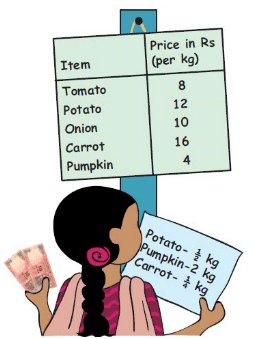
Ans:
(a) Cost of 1 kg tomatoes = Rs 8
∴ Cost of 1/2kg tomatoes = Rs 8 ÷ 2 = Rs 4
(b) Cost of 1 kg onions = Rs 10
Cost of 1 kg carrots = Rs 16
∴ Cost of 1/2kg onions = Rs 10 ÷ 2 = Rs 5 And,
Cost of 1/4kg carrots = Rs 16 ÷ 4 = Rs 4
The cost of 1/2kg onions is more than the cost of 1/4kg carrots.
(c) Cost of 1 kg potatoes = Rs 12 Cost of 1/4kg carrots = Rs 12 ÷ 4 = Rs 3
∴ Cost of 3/4kg potatoes = Rs 3 × 3 = Rs 9
(d) Keerthi has Rs 20. Her shopping list includes 1/2kg potatoes, 2 kg pumpkins and 1/4kg carrots.
Cost of 1/2kg potatoes = Rs 12 ÷ 2 = Rs 6
Cost of 2 kg pumpkins = Rs 2×4 = Rs 8
Cost of 1/4kg carrots = Rs 16 ÷ 4 = Rs 4
Total cost of all vegetables = Rs 6 + Rs 8 + Rs 4 = Rs 18 Keerthi can purchase all the vegetables in her shopping list, as she has Rs 20.
Page No 101:
a) What part of the whole is coloured? Write below each shape.

Ans:

1/2

1/4
b) Colour that part of the shape which is written below.

Ans:
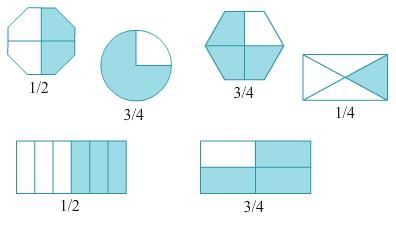
Cut in half
c) Draw a line which divides these shapes into half.
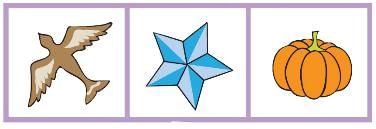
Ans:

Page No 102:
d) Colour half the number of shapes as shown here.

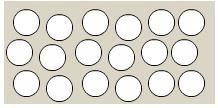
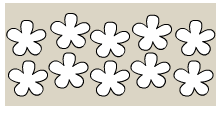
Ans:
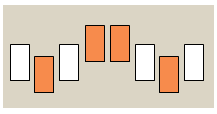

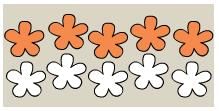
e) Colour 1/4 of these shapes.
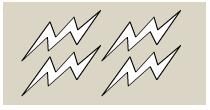
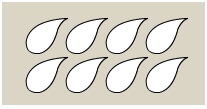
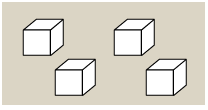
Ans:
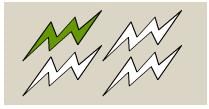
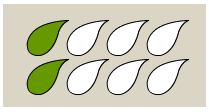

f) Match the coloured part as shown.
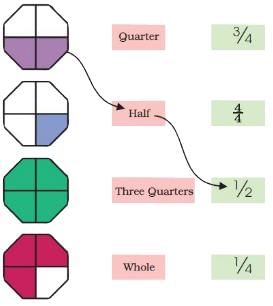
Ans:

Page No 103:
g) Only half of the picture is drawn here. Can you complete it by drawing the other half?

Ans:

h) This is a quarter of a picture. Can you complete it? How many more quarters will you draw to complete it? ___________
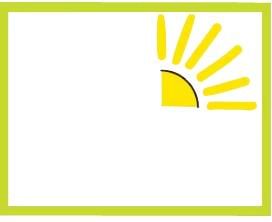
Ans:
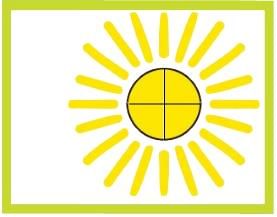
Three more quarters are required to complete the picture.
Half and Quarter of a Metre
Ques 3: Using your metre scale, cut a string of one metre.
• On this string, mark the length 1/2metre, 1/4metre and 3/4metre.
• Using your string, draw a line of length 1/2metre on the floor.
How many centimetres long is the line? ___________ Remember, 1 metre = 100 cm So 1/2metre = ……. cm
1/4metre = ……. cm
3/4metre = ……. cm
Can you see that when we add 1/2 and 1/4 we get 3/4?
Ans: 1 m = 100 cm Line of 1/2m on the floor = 100 cm ÷ 2 = 50 cm So, a line of 1/2m on the floor is 50 cm long.
1/2m = 100 cm ÷ 2 = 50 cm
1/4m = 100 cm ÷ 4 = 25 cm
3/4m = 25 cm × 3 = 75 cm
Page No 104:
Sharing Milk
Ques 1: This bottle is full of milk and it holds one litre. The milk is put into 4 other bottles so that each bottle has 1/4litre of milk.
• Shade the bottles to show the level of milk in each.
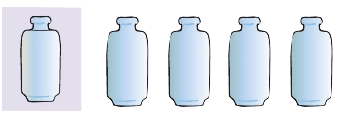
Remember, 1 litre = 1000 millilitres
• How many millilitres of milk does each bottle have? _________
Ans:
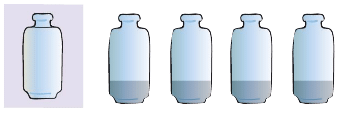
1 litre = 1000 millilitres
Each bottle contains 1/4litre of milk.
Thus, Quantity of milk in each bottle = 1000 mL ÷ 4 = 250 mL
Thus, each bottle contains 250 mL milk
Sharing Milk
Ques 2: Shan poured 1 litre of milk into two bottles so that the first bottle holds 3/4litre and the other holds 1/4litre.

• Shade the level of milk in each bottle.
• How many millilitres of milk does each bottle hold?
Ans:
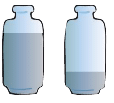
1 litre = 1000 millilitres
One of the bottle holds 1/4L milk.
Thus, Quantity of milk = 1000 mL ÷ 4 = 250 mL Another bottle holds 3/4L milk.
Thus, Quantity of milk = 250 mL × 3 = 750 mL
Page No 105:
Ques 1: Balance the Weight
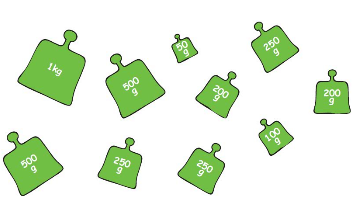
Choose from the weights above to make the two pans equal. In how many ways can you do it?
(a) Draw the weights in the empty pan. Remember, 1kg = 1000 g
Ans: We know 1 kg = 1000 g Thus, 2 kg = 2 ×1000 g = 2000 g
Following are the different ways in which we can make the two weights equal.
(1) 1 kg + 500 g + 500 g = 2000 g
(2) 1 kg + 500 g + 250 g + 250 g = 2000 g
(3) 1 kg + 500 g + 250 g + 200 g + 50 g = 2000 g
(4) 1 kg + 500 g + 200 g + 200 g + 100 g = 2000 g
(5) 1 kg + 250 g + 250 g + 250 g + 200 g + 50 g = 2000 g
We can make five different combinations to get 2 kg weight.
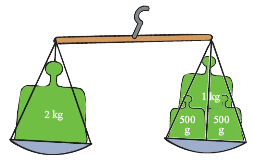
Ques 2: Balance the Weight

In how many different ways can you balance this weight of 3/4kg?
(1) …………………
(2) …………………
(3) …………………
Ans:

Ans: We know 1 kg = 1000 g
Thus, 1/4kg = 1000÷4 =250 g and 3/4kg = 250 g×3=750 g
Following are the different ways in which we can balance the weight of 3/4kg:
(1) 500 g + 200 g + 50 g = 750 g
(2) 250 g + 250 g + 250 g = 750 g
(3) 250 g + 250 g + 200 g + 50 g = 750 g
Page No 106:
Ques 1: There are 60 mangoes. 1/2 of them are ripe. How many mangoes are ripe?
Ans: Total mangoes = 60
1/2 of them are ripe.
Number of ripe mangoes = 60 ÷ 2 = 30 30 out of 60 mangoes are ripe.
Ques 2: There are 32 children. 1/2 of them are girls. How many children are boys?
Ans: Total children = 32
12 of them are girls. So, 1/2 of them are boys.
Number of boys = 32 ÷ 2 = 16 16 out of 32 children are boys.
Ques 3: There are 20 stars. A quarter of them are red. How many stars are red? How many are not red?
Ans: Total stars = 20
Quarter of them are red, which means 1/4 of them are red.
Number of stars that are red = 20 ÷ 4 = 5
5 out of 20 stars are red.
Number of stars that are not red = 20 − 5 = 15
Ques 4: Ravi wants a pencil. It costs Rs 2. He gives a one-rupee coin, one half-rupee coin and one quarter-rupee coin. Is it enough?
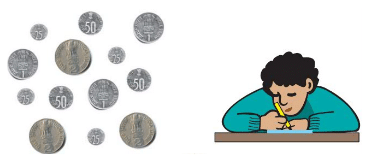
Ans:
Cost of a pencil = Rs 2
Money given by Ravi = Rs (1 + 0.50 + 0.25) = Rs 1.75 But, the pencil is for Rs 2.
Money required = Rs (2.00 − 1.75) = Rs 0.25
Ravi did not give enough money to buy the pencil. Rs 0.25 more is required to buy the pencil.
|
26 videos|195 docs|34 tests
|
FAQs on NCERT Solutions for Class 4 Maths - Chapter 9 - Halves And Quarters
| 1. What are halves and quarters? |  |
| 2. How can halves and quarters be represented visually? |  |
| 3. How can halves and quarters be represented numerically? |  |
| 4. How can halves and quarters be used in daily life? |  |
| 5. What are some examples of everyday objects that can be divided into halves and quarters? |  |

















